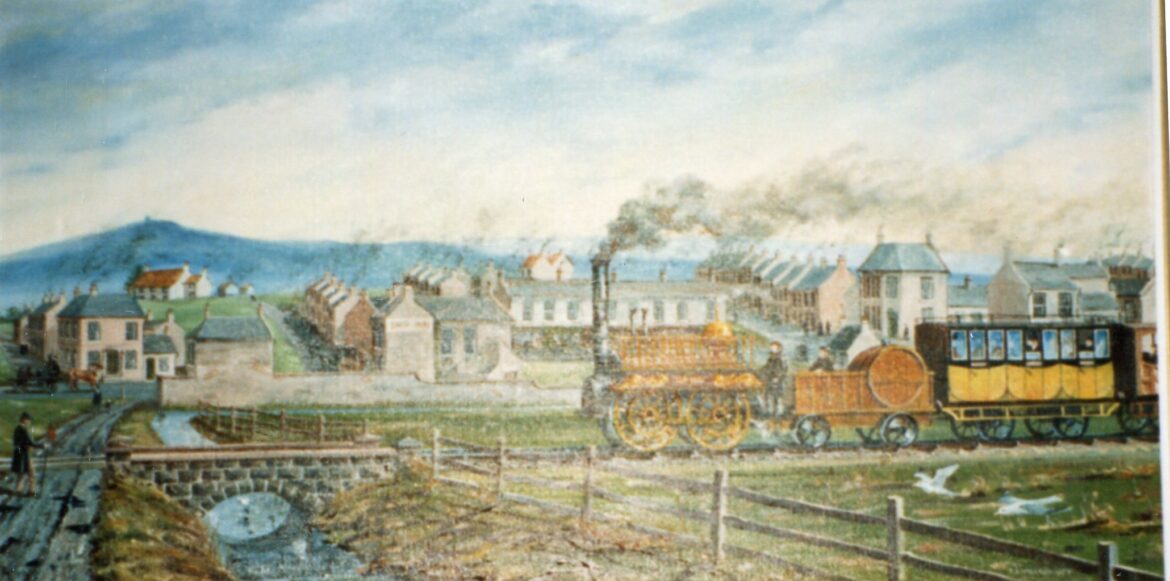Believe it or not, Middlesbrough largely exists thanks to the coming of the railways.
It might seem a little out of the way today, with its provincial railway station far away from the East Coast Mainline at Darlington.
But when the owners of the Stockton & Darlington Railway saw an opportunity to extend their line and make money by shipping coal from a location closer to the sea, it sparked the creation of the new town that became Middlesbrough.
Originally called Port Darlington, when the railway arrived from Stockton in 1830, it terminated near the river close to where the Transporter Bridge stands today.
Passengers weren’t really catered for, so this was merely a place to offload coal into the staithes where waiting ships took it on. The new staithes, designed by Timothy Hackworth, were much more efficient at loading and unloading coal than those used at Stockton, and also prevented as much breakage, which meant the coal was worth more.
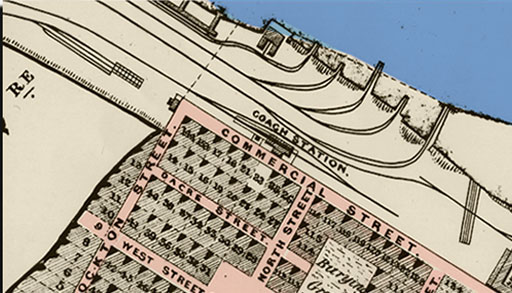
With the early coal staithes the town of Middlesbrough grew up around the organised pattern of streets laid out in what would become the St Hilda’s area. Passengers arriving on the railway alighted at a small hut near the staithes, which was marked on early maps as a Coach Station.
The First Proper Station
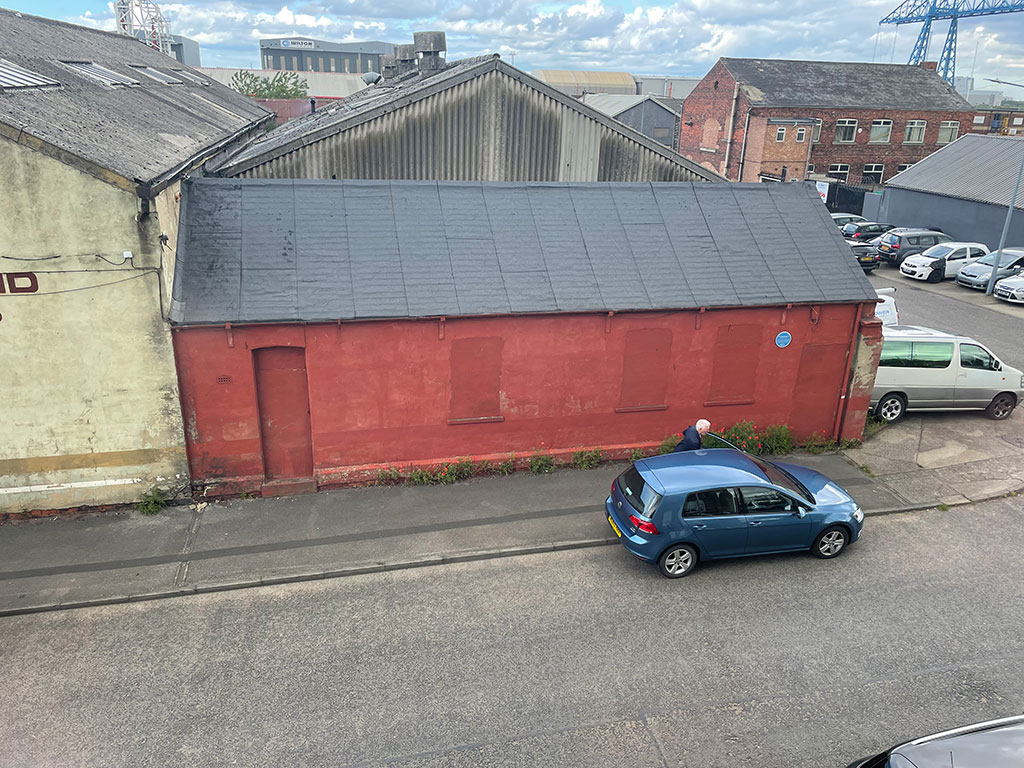
The site of the first proper station, with a plaque on the wall to mark it.
Soon a dedicated station building was constructed to cater for passenger and goods traffic on the railway line into the new town.
This was a more substantial, but still fairly rudimentary building, and would soon be replaced again.
Nothing remains of it today, but you can see the site opposite the MyPlace building (the former Customs House and Exchange Hotel) on the corner of Commercial Street and North Street, not far from what was the original Market Place.
A Plaque on the wall of the current building marks the site of this first Middlesbrough railway station.
Second Railway Station
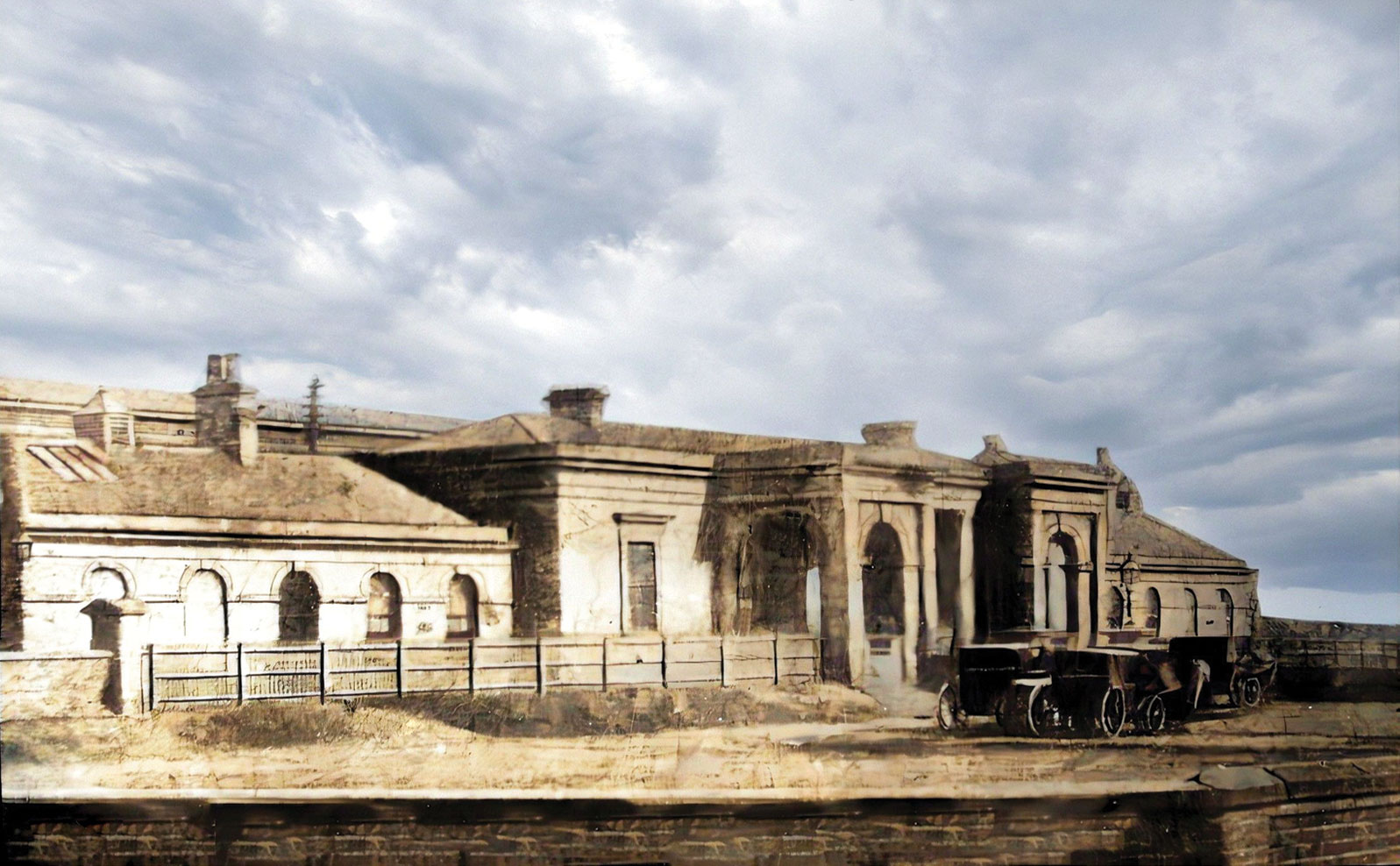
A picture of the original station, from Paul Menzies’ book Middlesbrough – A Colourful Past
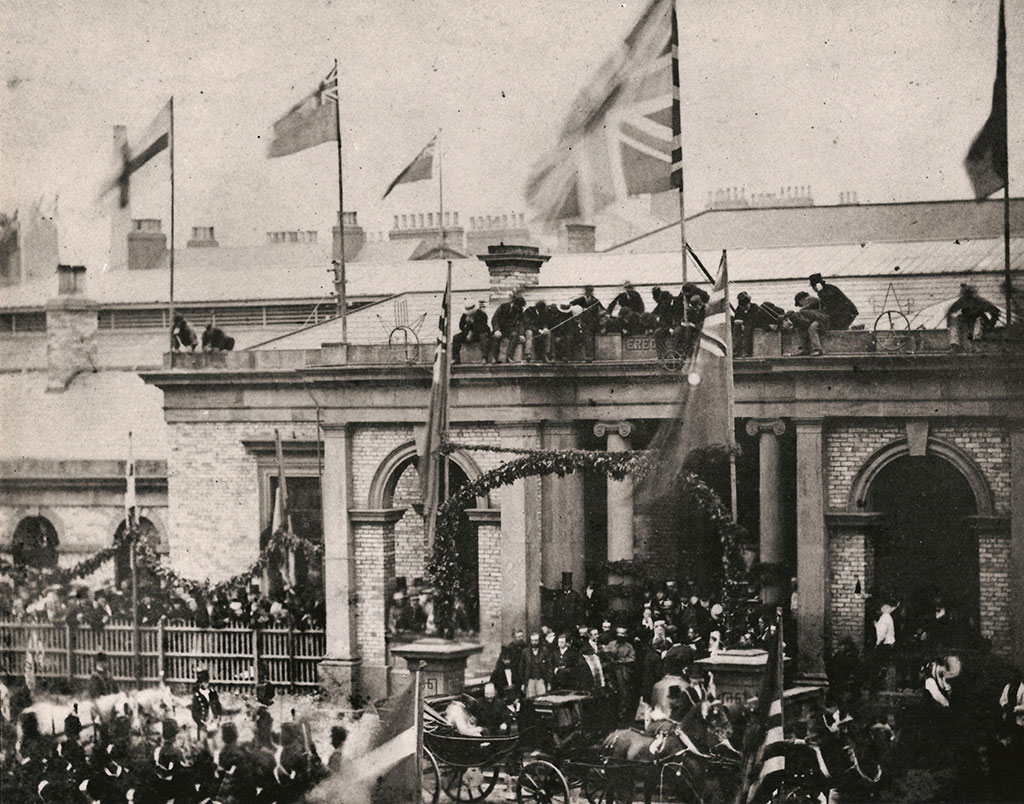
The King arriving at Middlesbrough station on 10th August 1868.
As the town of Middlesbrough moved south and a new railway line was built passing through the town on its way to the coast at Redcar, a new railway station was built in 1847.
This was a smart, but still modest, Victorian building on the site of the current station. At the time, people thought it was too far from the town, which still centred on the port and Market Square to the north.
Nothing exists of this second station unfortunately, but these pictures give an idea of what it looked like.
Current Middlesbrough Station
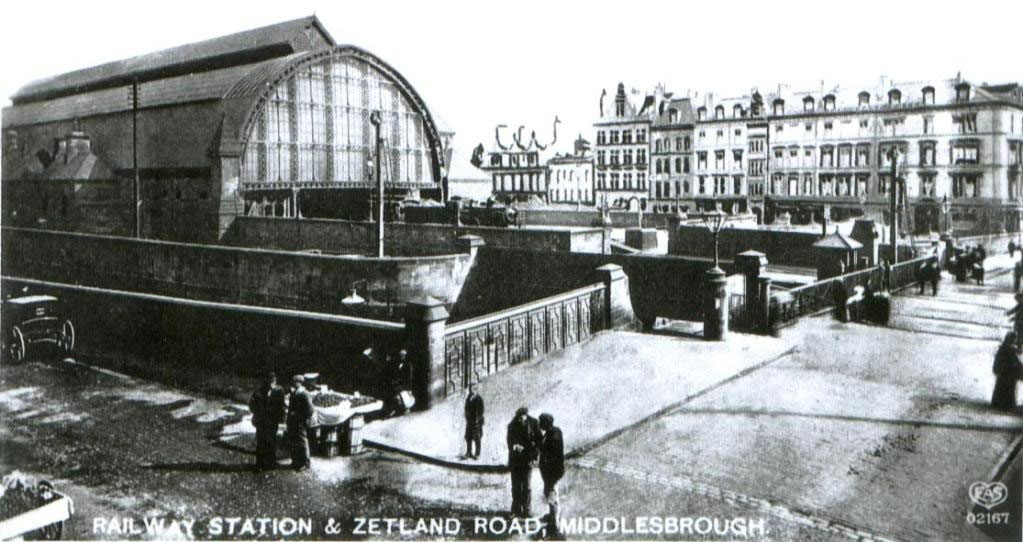
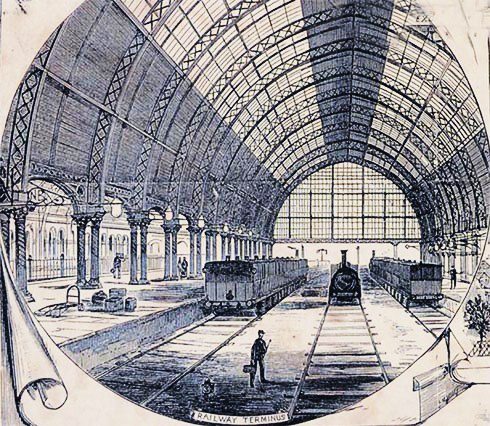
Middlesbrough Railway Stration in the 1870s
The current Station in Middlesbrough was opened in 1877.
Despite early grievances about the location, by this time the town had grown far south of the tracks thanks to Middlesbrough’s expanding population and growth in industries.
The station is a grand, Gothic structure which matches the elegance of many other neighbouring buildings of the time, constructed as this growing town was expanding in size, population and economically.
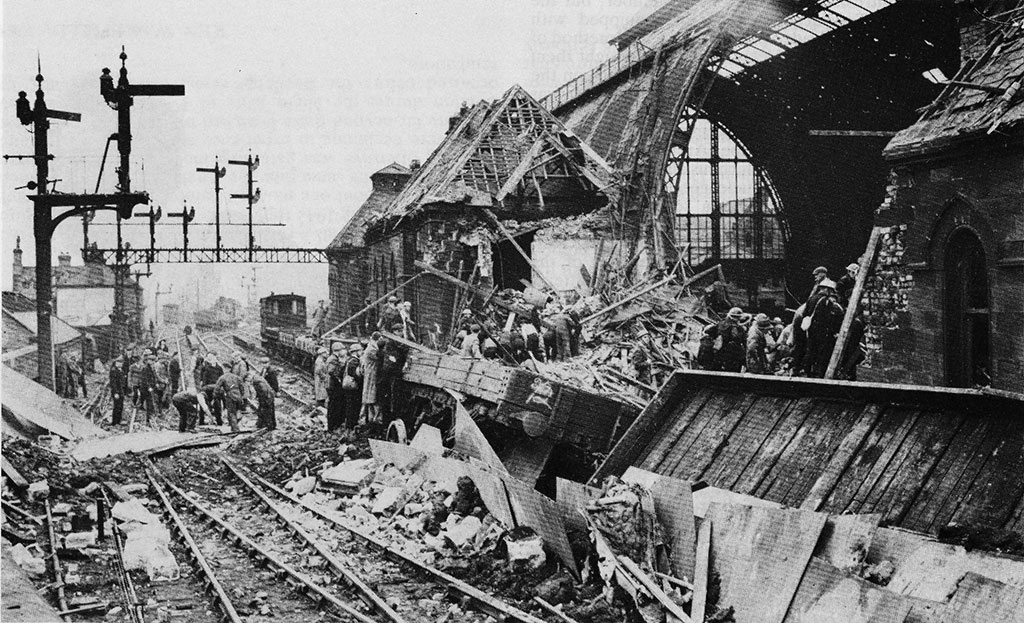
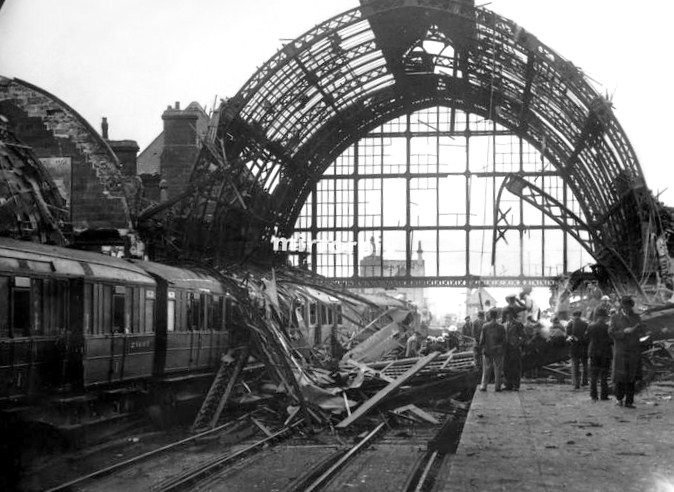
World War Two – Second World War – The ruins after a German air raid on a North East of England town. Pictured is Middlesbrough Railway Station five minutes after bombing, at about 1pm, on the 3rd August, 1942, (Bank Holiday Monday).
It originally had a large glass roof over the main platforms. This, however, was damaged beyond repair during an air raid on Middlesbrough on Monday 3rd August, 1942.
During the raid eight people were sadly killed.
Following this, the roof was removed and never replaced, leaving the building much as it is today.

Do you remember Zetland House which stood over Middlesbrough Station until the early 2000s?

